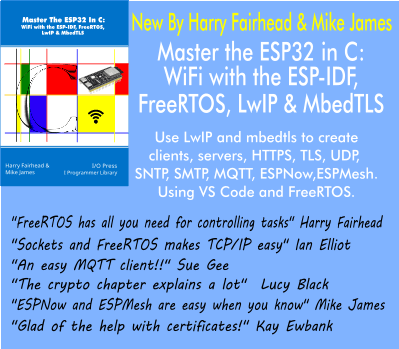| PiDP - A Pi Based PDP-8/I |
| Written by Harry Fairhead | |||
| Saturday, 29 August 2015 | |||
|
If you missed out on the paper tape eating, blinking light flashing, key switch programmed phase of computer hardware then you can catch up with the PiPI-8/I. It is a fairly complete recreation of the experience of using a PDP-8.
If you were there and remember what a pain it was to key in a bootstrap loader, you might even want to buy one to inflict the pain on the new generation of programmers. It is open source and you can buy a kit of parts. The idea is very simple. Take a nice looking case complete with lights and key switches just like a PDP-8. Then connect up a Raspberry Pi running the Sim H PDP-8 emulator with a suitable driver for the front panel hardware. The result is that you have something that behaves like an original PDP-8. That is, it may be the Raspberry Pi doing all the work but the lights, keyswitches and everything else behave just like the real thing. You can key in the bootstrap if you want to, but I only remember the bootstrap code for a PDP-11. There is no paper tape reader, however. Perhaps this is a job for the next Pi project, but as long as you don't miss the hiss of the high speed tape reader, or the chunter of the punch, you could just use a USB pen as a simulated paper tape. In the same way, the early disk packs can be simulated using SD cards. The point of it all has to be the flashing lights and the chance to interact directly with a relatively clean machine architecture - if only Intel had copied the PDP approach when they designed the 4004. Take a look at it in operation:
You can build your own from scratch and it isn't difficult. However, if you are in a hurry then a kit of parts costs $135 for an unpainted version or $155 for almost everything done. You need to add to this a Raspberry Pi and some extras such as SD cards, USB hubs and so on. The kit is essentially just the front panel, switches and lights. You can easily get one up and running for just under $200, which is a bargain. Why would you want one? There is something very direct about experiencing a processor physically single stepping and seeing the states of the registers displayed in binary light patterns. It is great for teaching basic computer principles and you can't fail to learn binary and octal using one. It was usual to think of the key switches in four groups of three each specifying an octal value to set the 12-bit registers to. As a teaching aid it should be great. As a nostalgic device my guess is that it will make a nice display artifact, but isn't it lacking something without the paper tape? I'm waiting for the Pi-per tape reader and punch. More InformationPiDP-8/I: Recreating the PDP-8/I Related ArticlesGordon Bell And DEC - The Mini Computer Era Birth of the Intel 4004 - the First Microprocessor Open Source BBC Micro In JavaScript Transistor level 6502 simulation Software From The 80s Running In Your Browser Play Early Console Games In The Browser To be informed about new articles on I Programmer, sign up for our weekly newsletter, subscribe to the RSS feed and follow us on Twitter, Facebook or Linkedin.
Comments
or email your comment to: comments@i-programmer.info
|
|||
| Last Updated ( Saturday, 01 June 2019 ) |


